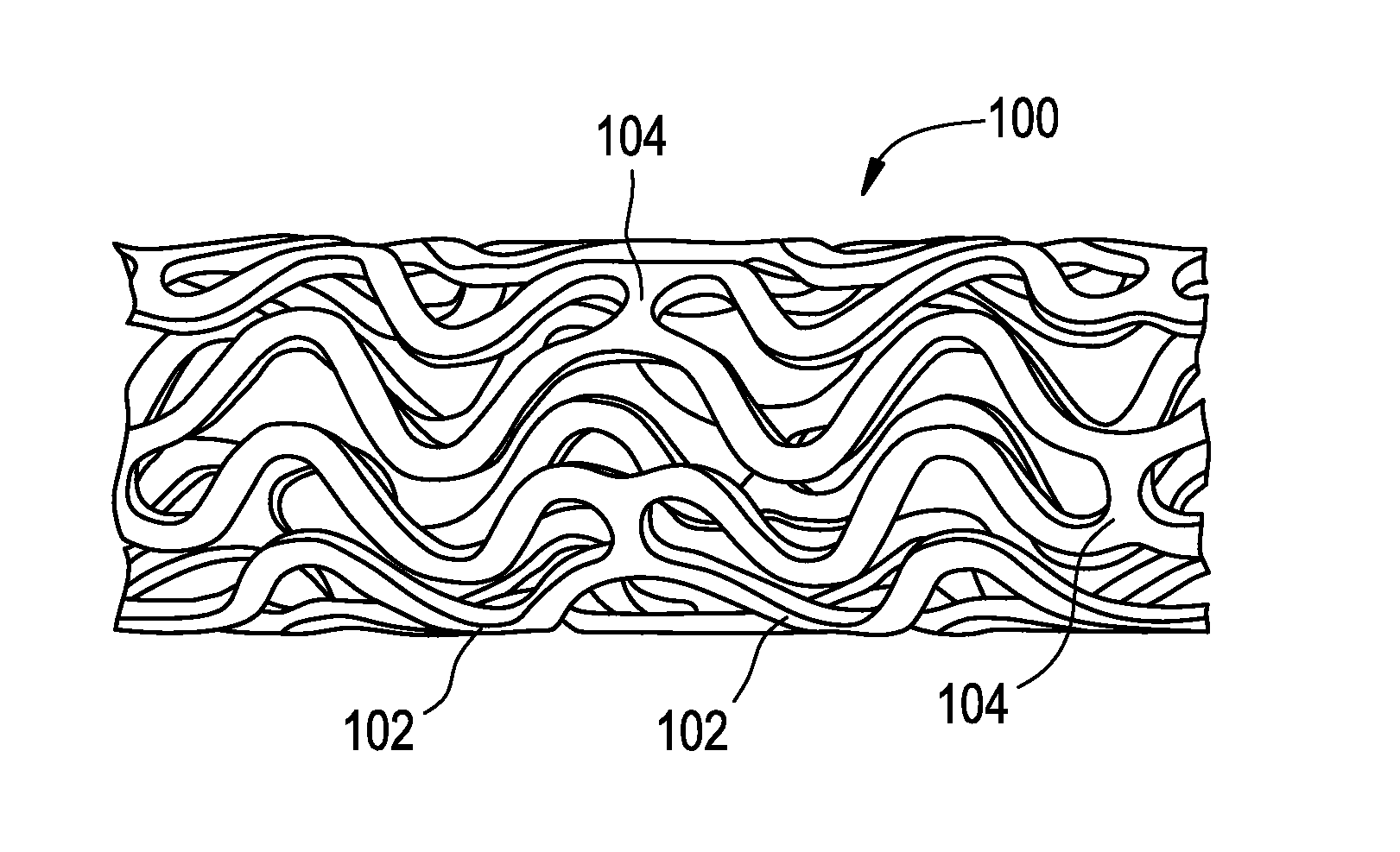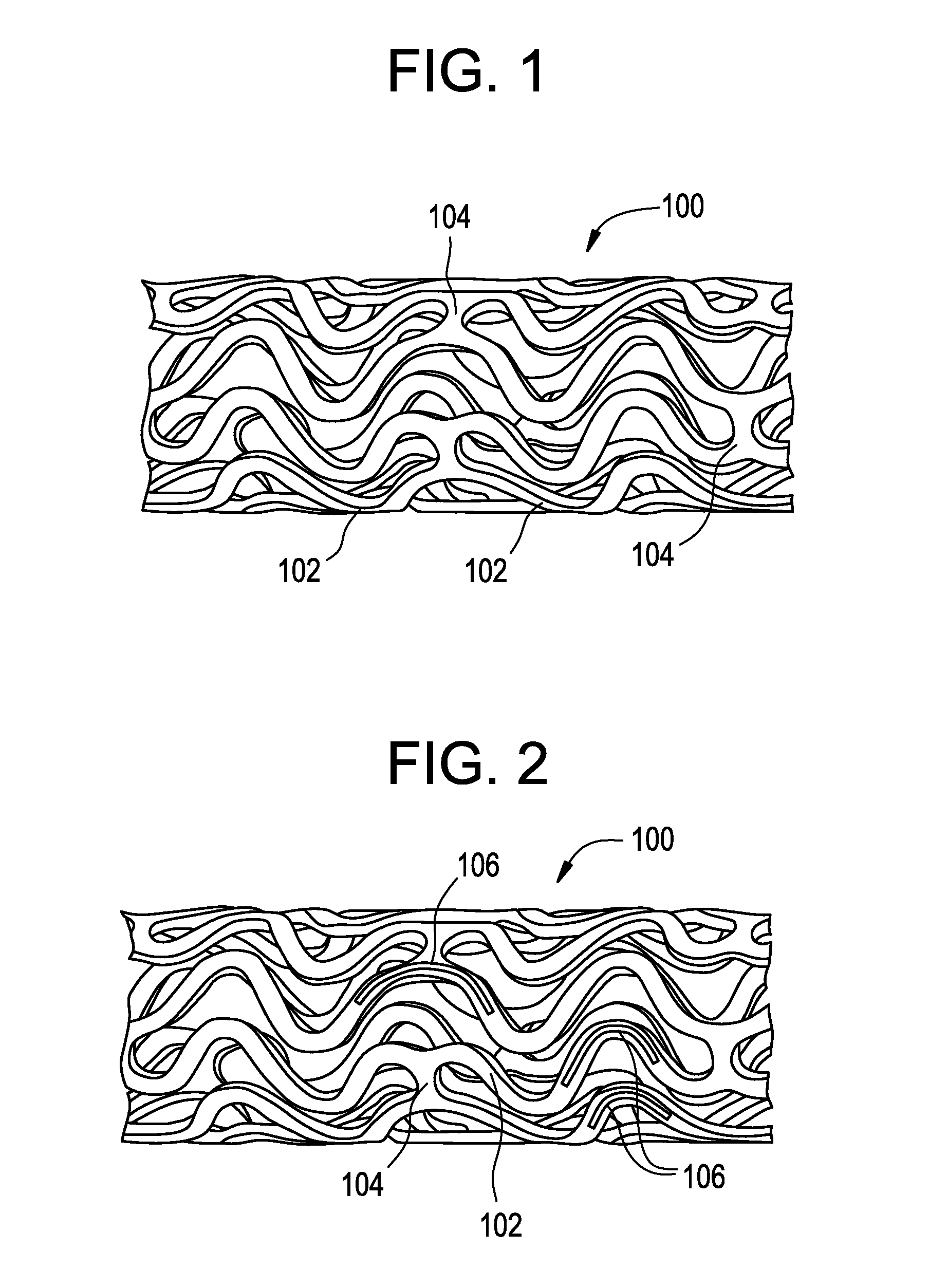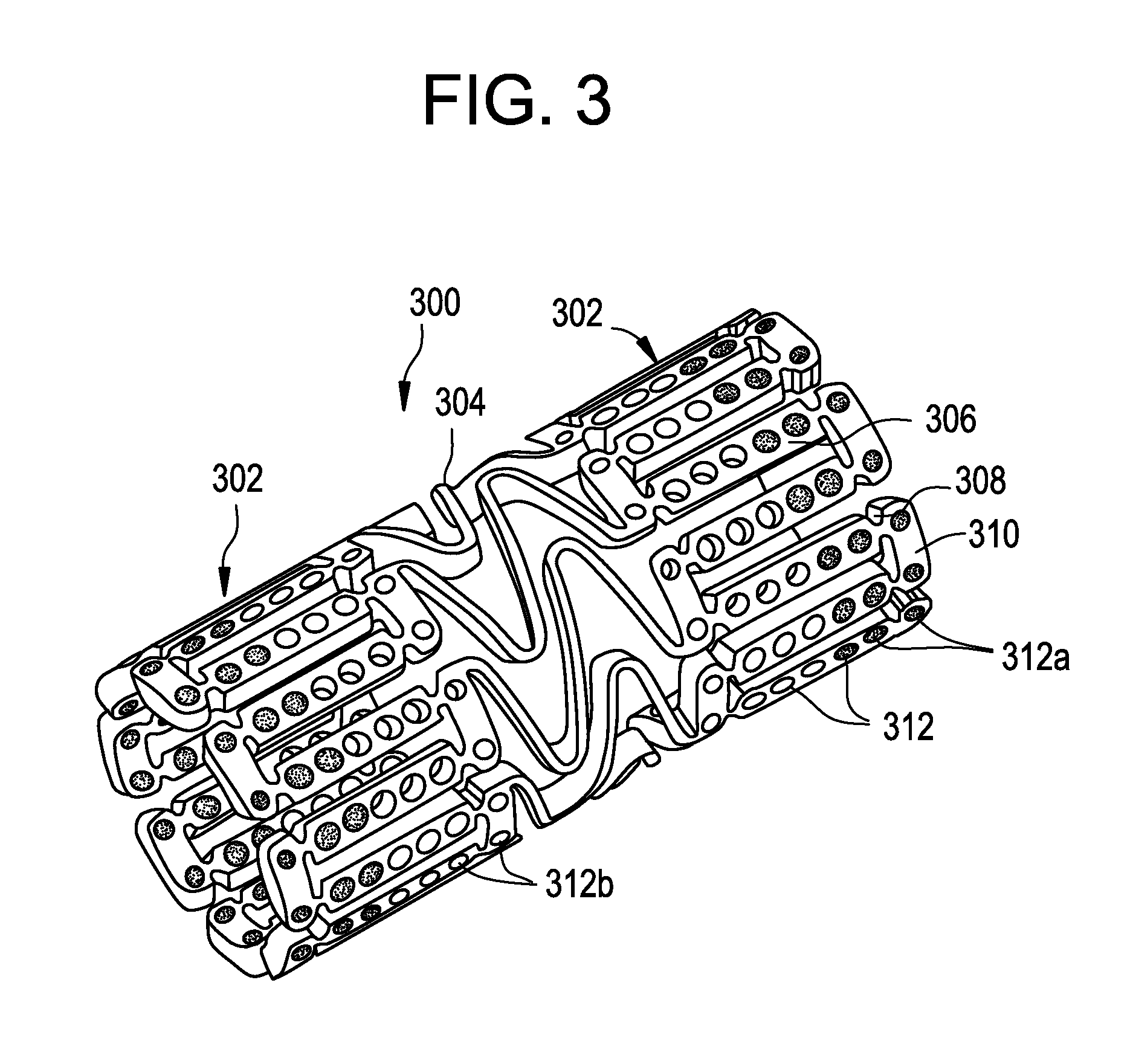Bare metal stent with drug eluting reservoirs having improved drug retention
a technology of drug elution and reservoir, which is applied in the direction of prosthesis, manufacturing tools, blood vessels, etc., can solve the problems of ischemic injury, stroke or myocardial infarction, angioplasty is abrupt closure of the vessel, and chronic pain, so as to minimize the elution of the therapeutic agent, maintain the patency of the vessel, and maximize the effect of elution
- Summary
- Abstract
- Description
- Claims
- Application Information
AI Technical Summary
Benefits of technology
Problems solved by technology
Method used
Image
Examples
Embodiment Construction
[0026]The drug / drug combinations and delivery devices of the present invention may be utilized to effectively prevent and treat vascular disease. While exemplary embodiments of the invention will be described with respect to the treatment of restenosis and related complications following percutaneous transluminal coronary angioplasty, it is important to note that the local delivery of drug / drug combinations may be utilized to treat a wide variety of conditions utilizing any number of medical devices, or to enhance the function and / or life of the device. For example, intraocular lenses, placed to restore vision after cataract surgery is often compressed by the formation of a secondary cataract. The latter is often a result of cellular overgrowth on the lens surface and can be potentially minimized by combining a drug or drugs with the device. Other medical devices which often fail due to tissue in-growth or accumulation of proteinaceous material in, on and around the device such as s...
PUM
| Property | Measurement | Unit |
|---|---|---|
| thickness | aaaaa | aaaaa |
| area | aaaaa | aaaaa |
| area | aaaaa | aaaaa |
Abstract
Description
Claims
Application Information
 Login to View More
Login to View More - R&D
- Intellectual Property
- Life Sciences
- Materials
- Tech Scout
- Unparalleled Data Quality
- Higher Quality Content
- 60% Fewer Hallucinations
Browse by: Latest US Patents, China's latest patents, Technical Efficacy Thesaurus, Application Domain, Technology Topic, Popular Technical Reports.
© 2025 PatSnap. All rights reserved.Legal|Privacy policy|Modern Slavery Act Transparency Statement|Sitemap|About US| Contact US: help@patsnap.com



